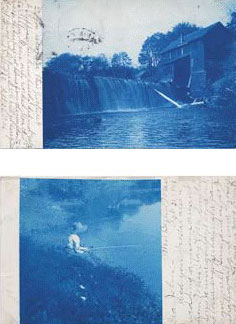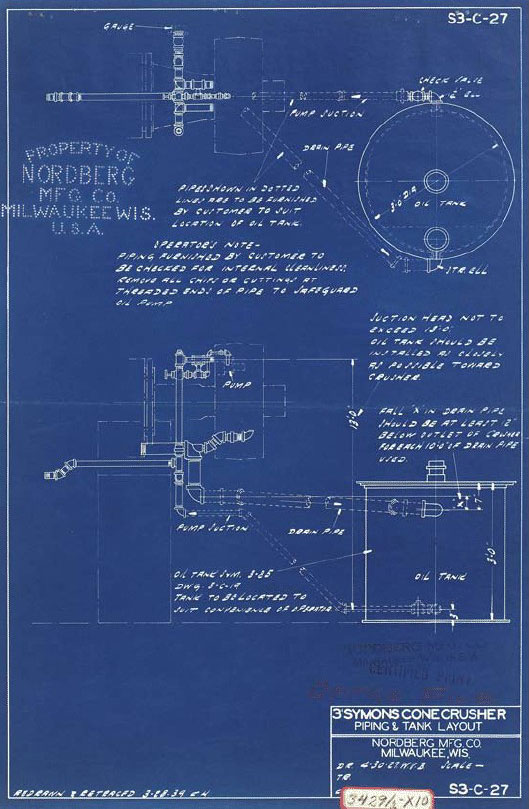- Relief printing
- Intaglio and planographic printing
- Color printing
- Bits and pieces
- Early photography in silver
- Non-silver processes
- Modern photography
- Color notes
- Color photography
- Photography in ink: relief and intaglio printing
- Photography in ink: planographic printing
- Digital processes
- Where do we go from here?
Blueprints

Blueprint. Artist unknown. Postcard, postmarked October 21, 1906. 3 1/4 x 3 1/4" (8.3 x 8.3 cm). The Museum of Modern Art, New York. Gift of Richard Benson. Blueprinting lent itself to the homemade postcard. These two date from 1906, when there was still some confusion about whether writing could appear on the address side of the card.
A number of “ferric” iron compounds undergo a chemical change when exposed to high levels of light, becoming “ferrous” instead and behaving very differently from the way they did in their former state. Of the several printing processes that use this mechanism the most common is the blueprint, which in fancy circles is known as the “cyanotype.” The image is formed from an insoluble iron compound known as Prussian blue. This material has a long history as a dye, and was also used in machine shops to reveal inaccuracies in bearing surfaces that were being finished by hand. Blueprints are contact prints made from original pen-and-ink drawings. They are really negatives: the blue background is composed of the iron compound.

Blueprint. Nordberg Manufacturing Company, Milwaukee, Wisconsin. 3' Symons Cone Crusher: Piping & Tank Layout. 1939. 17 5/8 x 12" (44.8 x 30.5 cm). The Museum of Modern Art, New York. Gift of Richard Benson. Nordberg’s in-house identification stamp has been applied to this print at the upper left through a series of punched holes giving the company name.
If an expensive material like silver were used, the prints would cost many times as much; instead they are extremely cheap, and the processing is simplicity itself—just washing the exposed print in water. For decades this was the process used to make all the blueprints that codified and dispensed engineering information, which had to be shared if people were to work together to make battleships, skyscrapers, and other complex constructions. In the 1950s the blueprint began to be replaced by the diazo print, a dye process that lends itself to mechanization and the use of automatic exposure and developing equipment. This new process avoided the messiness of developing the large blueprints needed for industry.
The blueprint has a beautiful photographic tonal scale, never seen in the engineering drawings that the process reproduced; those are chiefly composed of solid lines without intermediate tones. Many photographers working out in the field, or with severe financial restraints, used the blueprint as their primary process because it was simple, cheap, and permanent. These prints had just one serious drawback: they were brutally blue. We can accept the world turned into neutral gray, and even into the range of purples and reds that characterized early silver printing, but the blue does become tiresome after a while. Only a few serious artists used this medium, and then only sparingly. When we look outside the sphere of the well-known early photographers, though, we find a wide range of marvelous pictures printed this way. Almost all of them show a straightforward, workaday approach to the medium that can be a great relief if we have spent too much time wandering the halls of proper, refined photographic art.

